Most people who are struggling with grief don’t come to me saying, “I want to learn to live wholeheartedly after loss.” Usually, they say something like, “I want to stop feeling so depressed/ anxious/ tired/ angry. I want to stop crying all the time/ feeling demotivated and direction-less/ avoiding intimacy because I’m afraid of loving again.” They’re able to paint a really detailed picture for me of what their suffering and grieving looks and feels like and how it affects their lives.
So I ask them, “What do you want instead? How do you want to be feeling and experiencing life, and being in the world instead?”
Silence.
And then they go back to explaining how painful their grief feels, and telling me that they just want to get rid of the grief. This is normal. We naturally have a “negativity bias” (meaning that we focus more on threats and fears than things that are going well) and this becomes even more extreme when we’re stressed or grieving.
But grieving, healing and living wholeheartedly after loss is not a “subtractive” process. It’s an additive process.
Let me explain… you’re probably familiar with hearing or using language like, “recover from grief,” “release grieving emotions,” “let go and move on…” This language makes it sound like healing after loss involves removing, losing or letting go of grief, which affirms the idea that grief is bad/ an illness. It also affirms a “loss begets loss” mindset… not only did you lose the person/ thing you loved or wanted, but now you have to also lose or let go of a part of yourself that’s grieving and struggling with adapting to that loss. Since the part of you that’s grieving is you, this way of thinking is a form of fighting yourself – trying to cut off or disown part of yourself. And when you fight yourself, someone’s going to lose. And it’s going to be you.
The metaphor I prefer for healing is an additive process. It starts with appreciating that grief responses are normal and healthy – a sign that you’re alive and well and capable of love. It affirms that every part of you is well-designed to serve you and there’s always a positive purpose – even in the darkest and scariest emotions or strangest behaviours.
When we own and accept all parts of ourselves and our grief experience, we’re able to discover the positive purpose of our emotional responses and behaviours and then we can use that as guidance to live more authentically and to find more liberating options for pursuing that positive purpose. An additive approach to grieving says that, rather than trying to “eliminate,” “release,” or “let go of” grief, we can own it (and in so doing recognize the treasures in the trauma) and we can focus on inviting the love, peace, meaning, connection, joy, creativity and other wonderful emotions and experiences in alongside our grief. As we add more of those sort of “positive” experiences and feelings, our painful grief gets transformed and we’re able to live more and more wholeheartedly.
A creative metaphor and practice to affirm grieving and learning to live wholeheartedly after loss as an additive process…
As I said at the start of this article, it can be really hard to even know what we want to invite in, when we’re wishing that we could get rid of the painful grieving responses. This creative practice is a wonderful way to begin articulating what wholehearted living means to you, and to build out that picture of who you want to be, how you want to feel, what you want to do and what you want to be creating after loss. This is also a creative practice that will affirm grieving as an additive process and help you to begin letting the “positive” feelings and experiences in alongside your grief, rather than trying to focus on fighting yourself and “getting rid” of your grief.
The creative practice is based on the metaphor of a bowl of water. Think of your life as a bowl and your grief is the water that fills the bowl right up to the top.
That’s how grief feels at first – it feels like it is everything. Most traditional grief counseling takes the approach of “we need to figure out how to get rid of the water/ pour it out of the bowl” so that the grief is vented/ released and then you’ll feel better. What if, rather than focusing on trying to get rid of the grief, you gradually begin focusing more on what you want to add to your life, now that you’ve experienced this loss?
Imagine that you can do this by adding stones to the bowl of water.
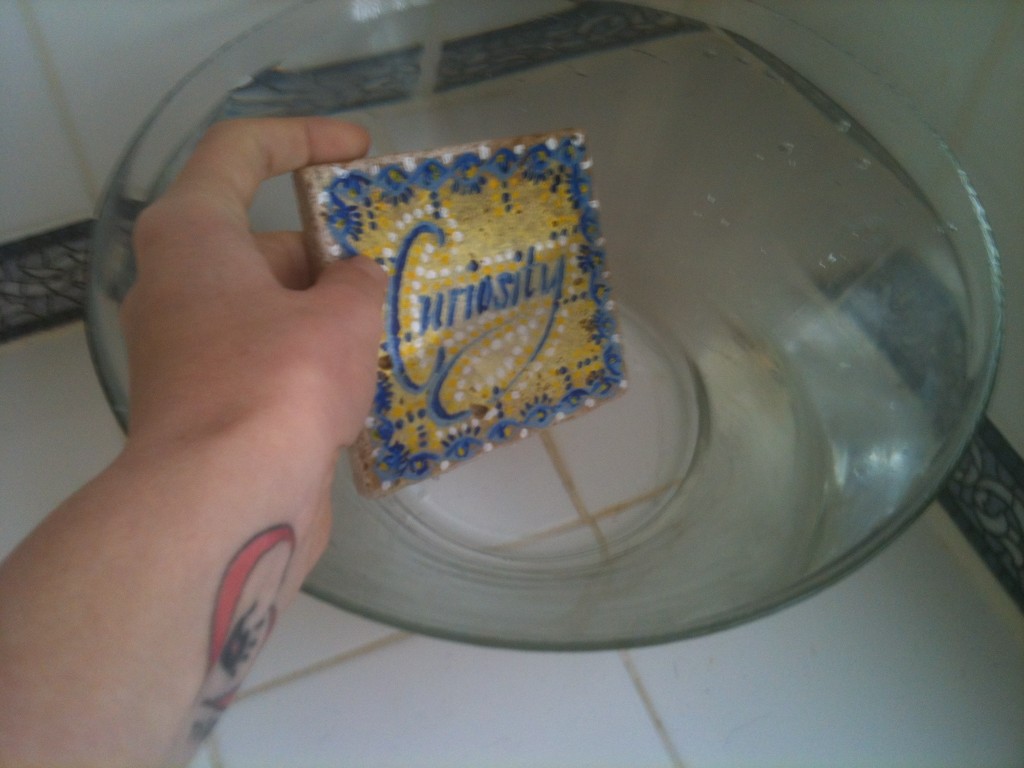 Each stone represents an aspect of what it means to live wholeheartedly after loss – a feeling or experience that you want to welcome more into your life. (Paint a stone to represent the wholehearted experience or feeling that you want to invite into your life.)
Each stone represents an aspect of what it means to live wholeheartedly after loss – a feeling or experience that you want to welcome more into your life. (Paint a stone to represent the wholehearted experience or feeling that you want to invite into your life.)
What happens to the water when we start adding stones to the bowl of water?
It gets displaced and overflows, right?
We’re not focusing on removing the water (grief), but at some point it begins to get displaced by the stones (wholehearted feelings, experiences and practices). We have no expectation or pursuit of a “water-free” (completely grief-free) situation in our future – the water (grief) will always still flow a little between the stones (wholehearted feelings, experiences and practices) and that’s fine, because it’s our story. But gradually the water (grief) becomes less the foreground and focus of our lives and more a part of the “connective tissue” that flows between other wholehearted things that become important to us and which we’re nurturing.
And in many ways, as we look at the bowls (our lives), the water (grief) can serve to illuminate or magnify the stones (wholehearted experiences) and offer even more beautiful patterns, perspectives and meanings than the stones (wholehearted experiences) would have done without the water (grief).
(I love that in the picture above, the water has created a mandala of curiosity and in the picture below, the water has magnified the curiosity so that it appears to be double! For me that’s the essence of wholehearted living – that loving and losing are two sides of the same coin and that fully embracing the losing enables you to fully embrace the loving. The pain and darkness illuminates and magnifies the light.)
Doing this practice on a regular basis would gradually help you to build out a more detailed and clear picture of what you want to be being, feeling and creating after loss. And your wholehearted stones would serve as a tangible reminder of the values you want to be living now and a sort of creative compass you can use in decision-making. And as you add wholehearted stones to your bowl, your painful grief will gradually be transformed, and in turn, it will both overflow (and possibly nourish others) and serve to illuminate and magnify your wholeheartedness.
Join me to add a wholehearted stone to our grief bowls each week
I’m going to do this as a practice myself. Each week I will continue to decorate a stone tile with some aspect of wholehearted living that I want to affirm, appreciate or invite into my life. And then I’ll add the stone to my bowl and write about why I chose that stone, and gradually build a pile of wholehearted stones. Here’s why I chose curiosity as this week’s stone.
If you want to join me, here’s the materials you need:
- A large glass bowl or jar. I chose a bowl with a wide mouth because I love the open-ness of the shape and it’ll allow for lots of space for me to add more stones.
- A pile of stones. You can either collect pebbles from the beach if you have a pebbled beach nearby or buy a bag of beach pebbles from your local garden center. Or do what I did and buy a pack of small square stone tiles. (I chose this because it was snowing badly this weekend and I couldn’t get to the garden center but a home decor center nearby had these. I quite like the idea of possibly using the tiles to create something else afterwards, once I have a whole bunch of tiles… we’ll see!)
- Acrylic paints or oil paints, and a paint brush (Choose paints that will be waterproof once they’ve dried!).
- Water to fill your bowl.
- A Rooibos tea latte and some of your favorite soothing music in the background 🙂
Would you like guidance to explore and heal your grief?
I’ve put together a 35-page grief “workbook” for you; an introduction to Remembering For Good and living wholeheartedly after loss. Learn more about the Remembering For Good grief workbook.
The first book in the QUESTIONS + ART AFTER LOSS series, Untangle Your Grief is a beautiful 65-page book of artful questions and creativity-sparking art prompts to help you to create meaning, belonging, and hope after loss.


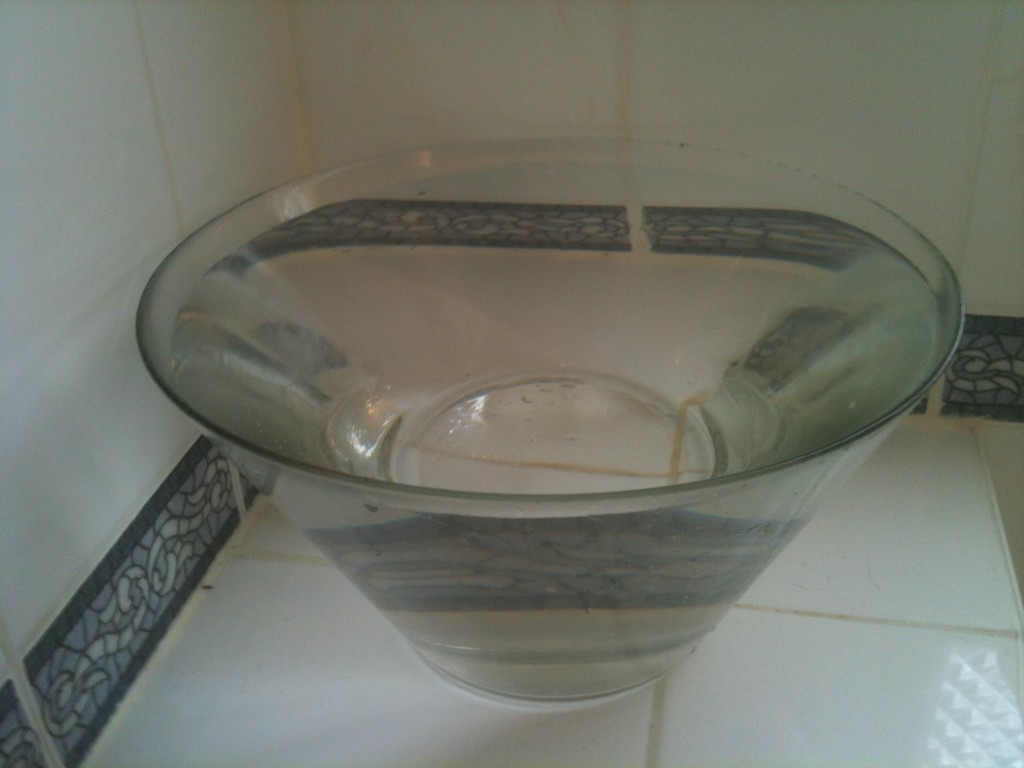
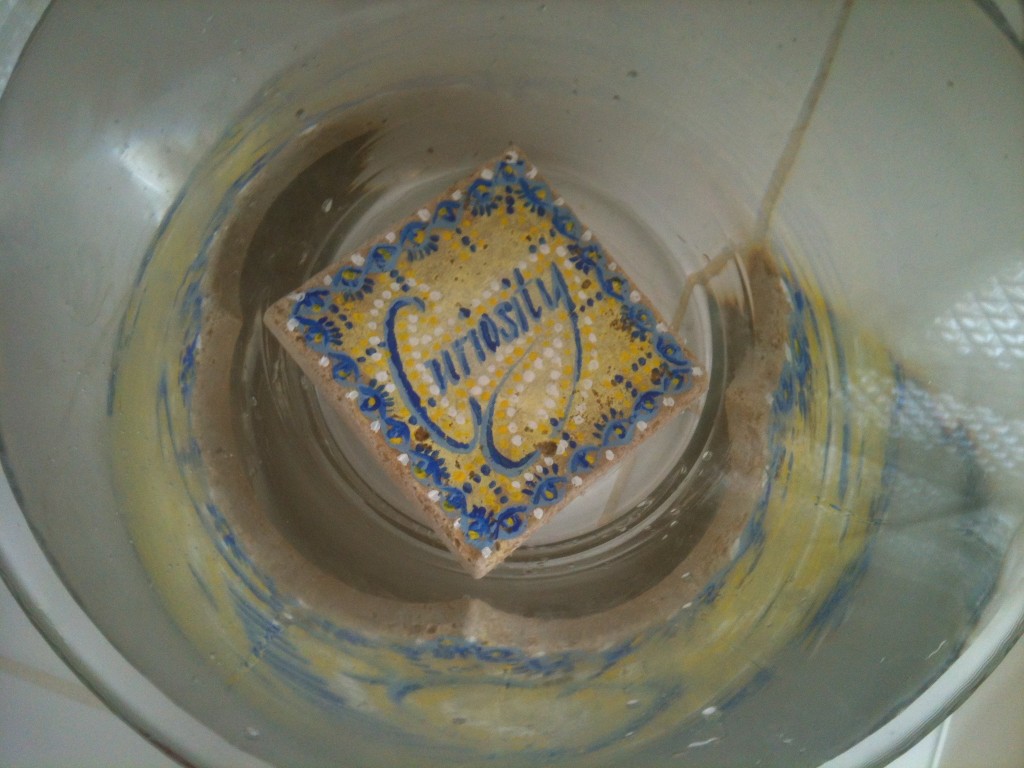
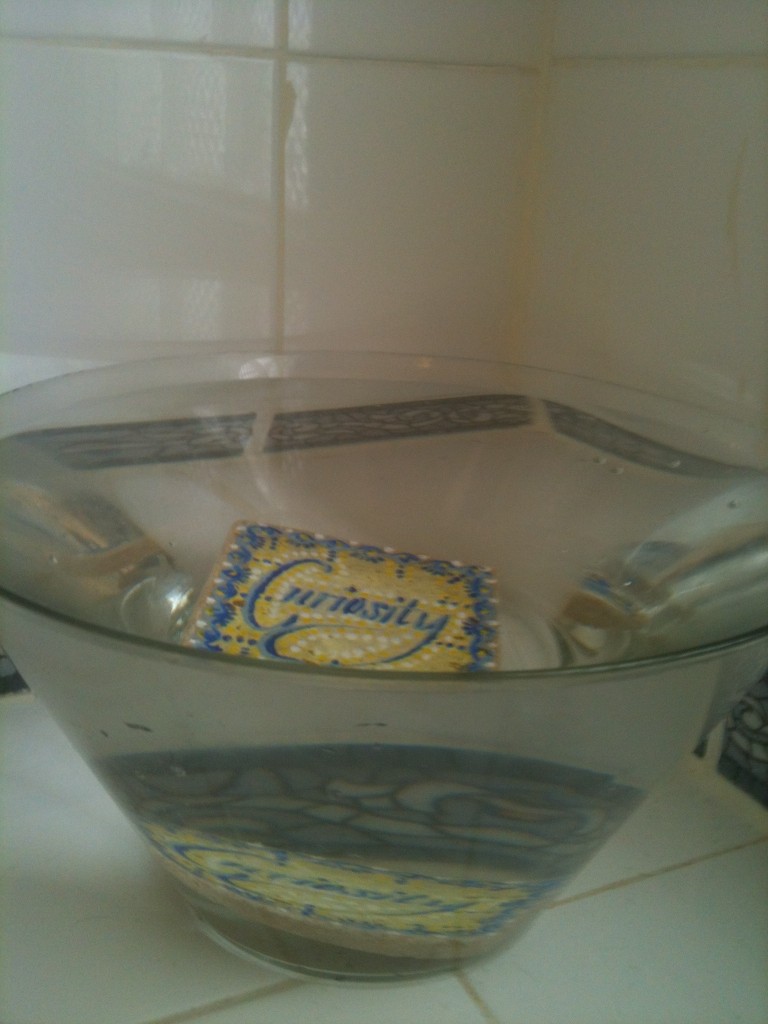
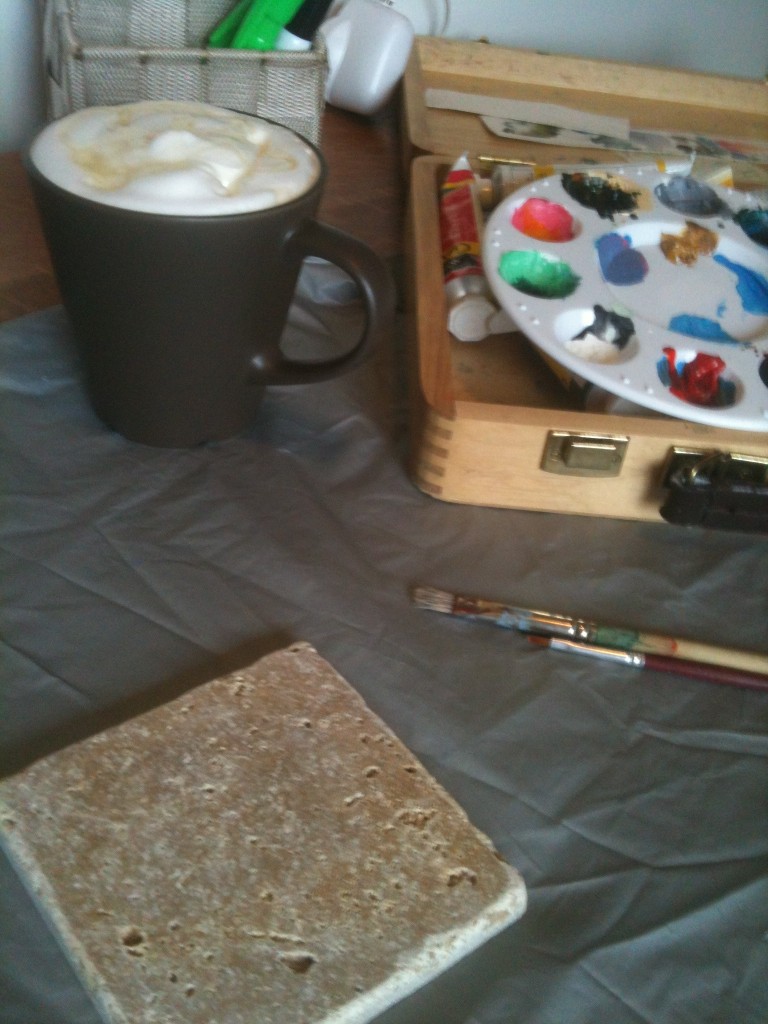
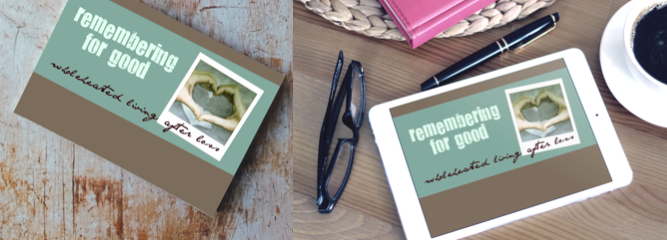
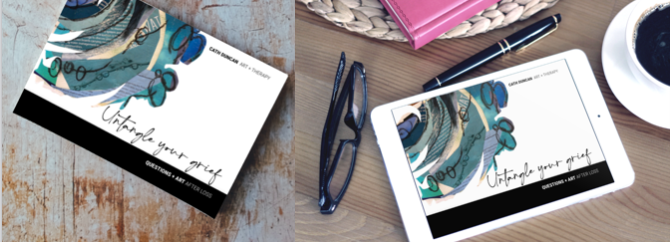
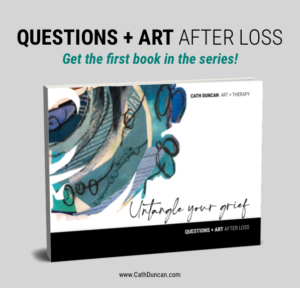
Cath, your words are so right on it takes my breath away. Yes, one loss can beget other losses, whether it’s the necessity of changing your living situation, the surprising absence of people unsure how to be around you, or any number of losses tied to the original loss. The idea of having to lose one’s grief in the early stages does feel like being asked to lose one’s Self. Thank you, thank you for your incisive perception!
@AnnetteG My pleasure, Annette. Thanks for coming over and commenting!
Hi Cath! I love the idea of grief being additive. I think grief gets a bad reputation. There is so much that grief can offer us. Your practice of using the glass bowl full of water to which we can add all the experiences, emotions, and desires to it is a wonderful way to make this more intentional. What a lovely way to view grief. I appreciate having this image and practice to re-frame the negative stigma that is often part of our story about our sadness and grief. Thank you so much!
@debrabh Thank you, Debrabh! So glad you found this metaphor helpful! Thanks for commenting.